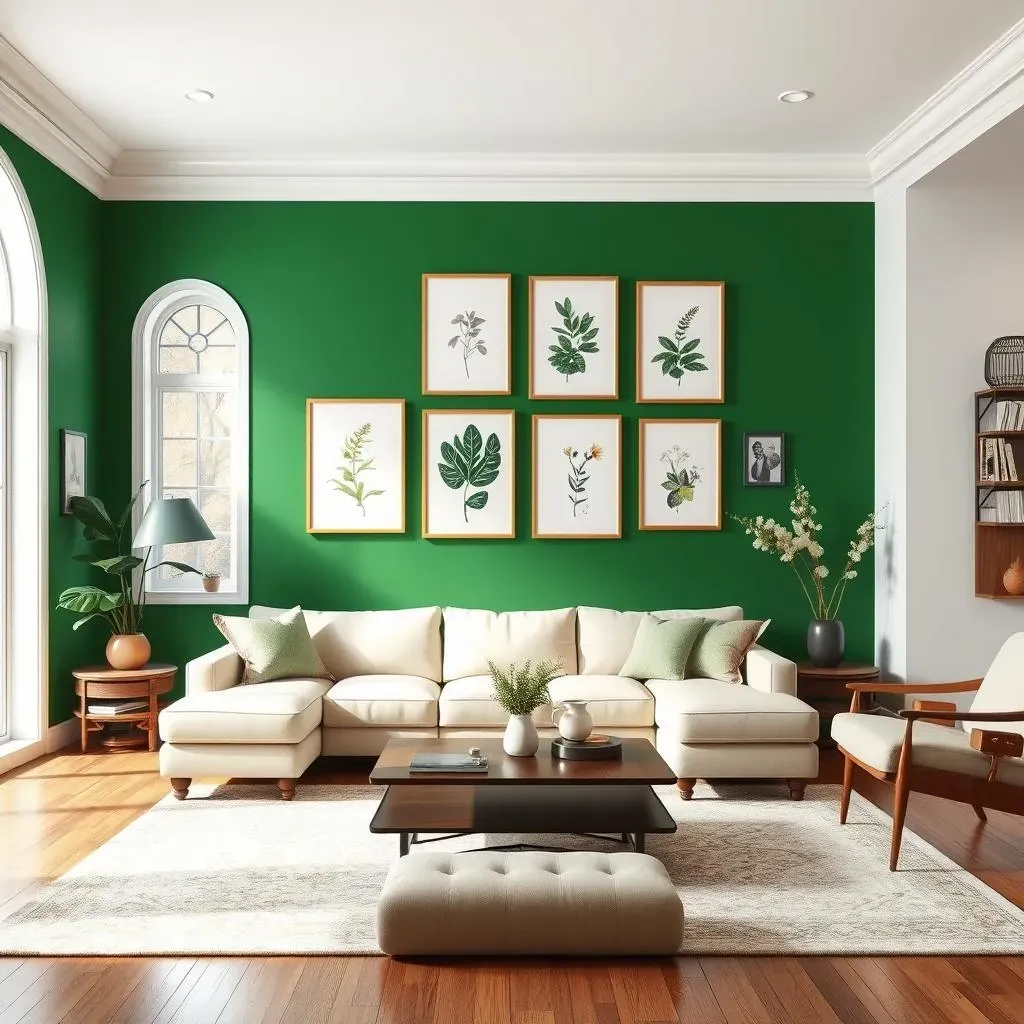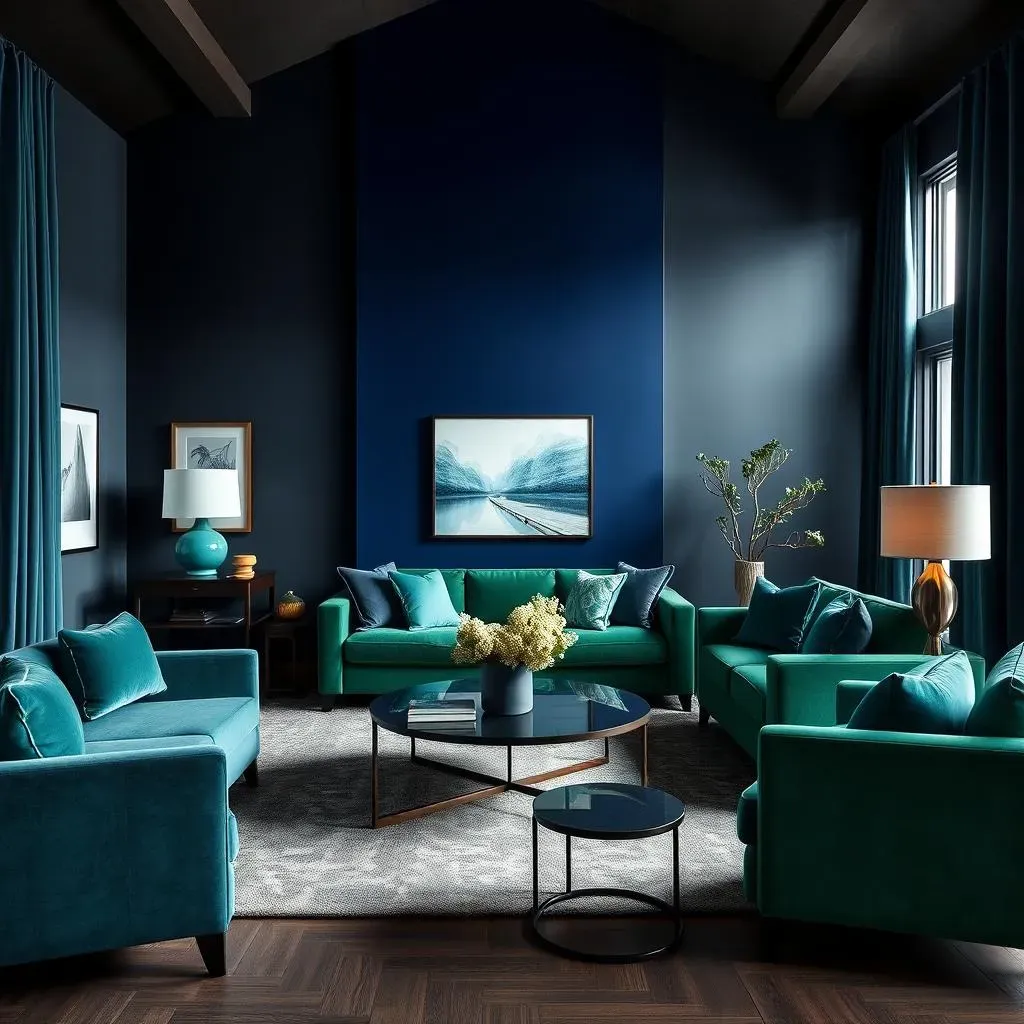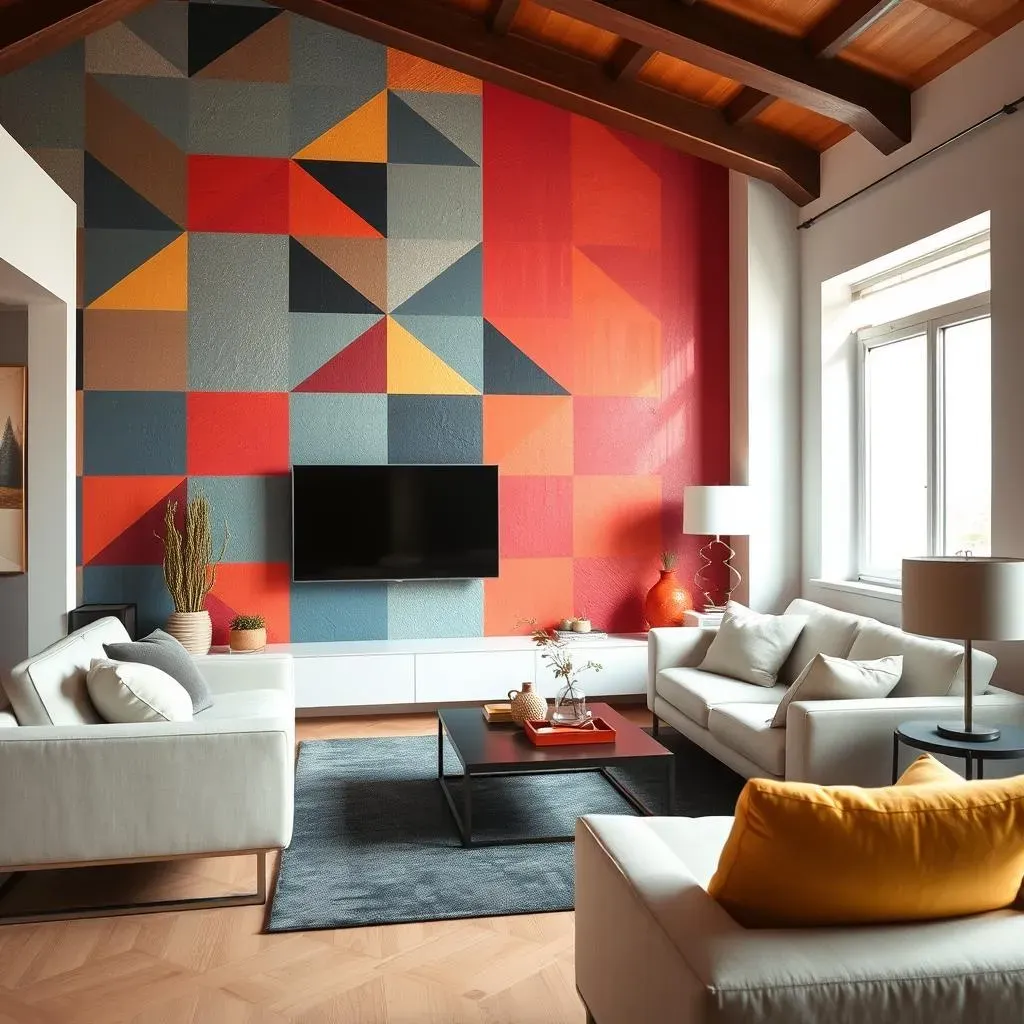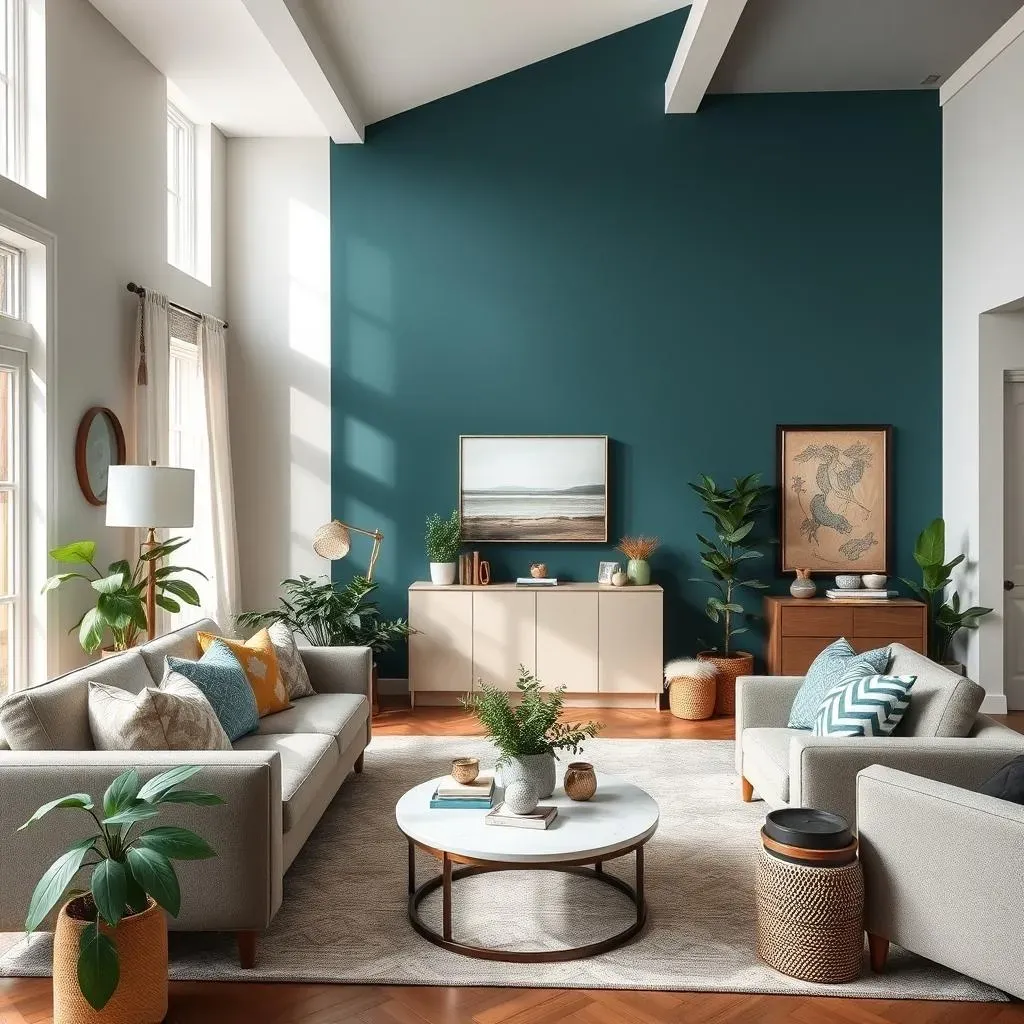Table of Contents
Ready to inject some serious personality into your living room? Forget boring, plain walls. We're diving headfirst into the exciting world of living room accent wall paint ideas. This isn't just about slapping on a random color; it's about creating a focal point, a conversation starter, and a space that truly reflects your style. Think of it as giving your living room a stylish makeover, one wall at a time. We’ll explore how to choose the right wall, pick the perfect color that makes a statement, and even look at some cool, creative designs you can try. Get ready to unleash your inner interior designer, because by the end of this, you’ll have all the inspiration you need to transform your living room from drab to fab. We'll also touch on some easy DIY tips to make the process a breeze. So, grab your paintbrushes and let's get started!
Choosing Your Perfect Living Room Accent Wall

Choosing Your Perfect Living Room Accent Wall
Finding Your Room's Natural Star
Okay, so you're itching for an accent wall, but where do you even start? It's not about just picking any random wall, that's for sure. Think of your living room like a stage, and you need to find the wall that naturally draws attention. Usually, this is the wall that's the first thing you see when you walk into the room. It could be the wall behind your sofa, or maybe the one that has a cool architectural feature like a fireplace or a large window. Don't pick a wall that's already got too much going on, like a bunch of doorways or busy artwork. You want the accent wall to be the star, not just another player in the background.
I always tell people to take a step back and really look at the room. What's the first thing your eye lands on? That's probably your best bet. It might seem obvious, but it's a step that's often skipped. If you're still not sure, try standing in different parts of the room and see which wall feels like it's begging for some attention.
Room Layout and Purpose
Once you've spotted your potential star wall, consider the room's layout. How does the furniture sit in relation to that wall? Is it a good backdrop for your main seating area? You don't want your accent wall to clash with the rest of the room. Think about it like this: the accent wall is there to support the furniture, not compete with it. It should enhance the overall feel of the space, not make it feel cramped or out of balance. If you're unsure, take some photos from different angles, and then you can get a better perspective on how the accent wall will fit into the scheme of things.
Also think about what the room is used for. Is it a place for family movie nights or a quiet reading nook? The purpose of the room should influence your choice of accent wall and the color you pick. A dark wall might be cozy for a movie room, but feel out of place in a bright, open living space. It's all about making the wall work for you and your lifestyle, not the other way around.
Consideration | Questions to Ask | Why It Matters |
|---|---|---|
Focal Point | What wall do you notice first? | Ensures the accent wall grabs attention. |
Room Layout | How does furniture align with the wall? | Prevents the wall from clashing. |
Room Purpose | What is the room used for? | Helps choose a suitable color and design. |
Highlighting Architectural Features
Now, let's talk about architectural features. If your living room has a fireplace, a built-in bookshelf, or some other cool detail, using that wall as your accent wall is a fantastic idea. It’s like putting a spotlight on what’s already awesome. It’s about making the most of what you’ve got and not fighting against the architecture of your space. An accent wall can really enhance those features, making them even more eye-catching. Think of it as a way to frame those details and make them stand out.
But remember, if your room is lacking those cool details you don’t have to worry. You can still create an amazing accent wall. The key is to choose a wall that you feel will make the most impact and create a space you are excited to be in. It’s your living room, and you need to choose what works for you.
Bold Living Room Paint Colors for Impact

Bold Living Room Paint Colors for Impact
Alright, so you've picked your wall, now comes the fun part: choosing a color that really packs a punch. We're not talking about subtle hints of color here; we're going for bold, statement-making shades that can totally transform your living room. Think of your accent wall as a chance to express yourself, to go a bit wild, and to create a mood that's totally you. It's about taking a risk and not being afraid to go for colors that might seem a little out there at first.
Now, when I say "bold," I don't mean it has to be neon or something that'll make your eyes hurt. It's about choosing a color that's rich, saturated, and full of character. It could be a deep navy blue that makes the room feel cozy and luxurious, a vibrant emerald green that brings nature indoors, or even a daring charcoal gray that adds a touch of drama. The key is to pick a color that you love and that will bring the wow factor to your living space. And don't be afraid to consider darker shades; they can actually make a space feel larger and more intimate, despite what you might think.
Bold Color | Mood | Best Used For |
|---|---|---|
Deep Navy Blue | Cozy, Luxurious | Relaxing living rooms |
Emerald Green | Nature-inspired, Vibrant | Rooms with lots of natural light |
Charcoal Gray | Dramatic, Sophisticated | Modern and chic spaces |
Teal | Calming, Unique | Living rooms with eclectic styles |
Don't just grab the first color that catches your eye, though. It's worth testing out a few samples. Paint some swatches on your chosen wall, and live with them for a few days. Look at them in different lights, both during the day and at night. You might be surprised at how different the color looks depending on the lighting. This is a crucial step, because you don't want to commit to a color that ends up looking completely different than you expected. It’s like trying on clothes before you buy them – you need to see how it looks in your environment.
Another thing to keep in mind is how the bold color will work with the rest of your furniture and decor. You don't want your accent wall to clash with your existing pieces. Instead, it should complement and enhance them. So, consider the colors of your sofa, rugs, and artwork when you're making your decision. It's all about creating a cohesive and visually appealing space. If you're not sure, look at some color palettes online or ask a friend for their opinion. Sometimes, another set of eyes can help you see things you might have missed.
Creative Living Room Accent Wall Paint Designs

Creative Living Room Accent Wall Paint Designs
Geometric Patterns for a Modern Touch
Okay, so you've got your bold color picked out, but why stop there? Let's kick things up a notch with some creative paint designs. Geometric patterns are a fantastic way to add a modern, graphic vibe to your living room. I'm talking stripes, chevrons, triangles, even a cool harlequin pattern. It's like turning your wall into a piece of art. The great thing about geometric designs is that they can be as simple or complex as you like. You can use painter's tape to create clean lines, or go freehand for a more organic feel. The possibilities are endless, and it’s a great way to show off your creative side.
I've seen people use different shades of the same color to create a subtle gradient effect, or go wild with contrasting colors for a high-impact look. It's all about experimenting and finding what works for your space. Don't be afraid to try something that might seem a little out there at first – it could end up being your favorite design element in the room. Remember, it’s just paint, and you can always change it if you don't like it.
Textured Paint for Depth and Interest
If you want to add some depth and dimension to your accent wall, textured paint techniques are the way to go. We're not just talking about flat paint here; we're diving into the world of sponging, rag rolling, and even stenciling. These techniques can create a subtle, almost three-dimensional effect that can add a whole new level of interest to your living room. Imagine a wall that feels like it has texture, even though it's just paint. It's like adding a layer of visual intrigue that catches the eye and makes the space feel more dynamic.
I've seen some really amazing results with faux finishes that mimic the look of concrete or aged plaster. These techniques can bring an industrial or rustic touch to your living room, depending on the style you're going for. And don't think it's all complicated; you can achieve some pretty cool effects with simple tools and a bit of practice. It's all about embracing imperfection and having fun with the process. You can even try using different tools, like a sea sponge or crumpled paper, to create unique textures.
Design Technique | Description | Best Used For |
|---|---|---|
Geometric Patterns | Stripes, chevrons, triangles, etc. | Modern, graphic spaces |
Textured Paint | Sponge painting, rag rolling, stenciling | Adding depth and dimension |
Ombre Effect | Gradual color transition | Soft, calming vibes |
Ombre and Color Wash for a Soft Transition
For a softer, more subtle approach, consider ombre or color wash techniques. Ombre involves a gradual transition from one color to another, creating a beautiful gradient effect on your wall. It’s like a sunset on your wall, and it can add a touch of serenity and elegance to your living room. Color washing is similar, but it’s more about creating a layered, textured effect with multiple colors. Both techniques are great for adding visual interest without being too overwhelming.
I've seen ombre walls that go from a light pastel to a deep, rich hue, creating a stunning focal point. You can achieve this effect by using different shades of the same color and blending them together with a brush or sponge. It’s all about creating a seamless transition that’s pleasing to the eye. Color washing is also a great way to add depth, with the layers of color creating a textured, almost aged look. It’s a technique that’s both artistic and impactful, and it can really transform the feel of your living room.
DIY Tips for Painting Your Living Room Accent Wall

DIY Tips for Painting Your Living Room Accent Wall
Okay, so you're inspired, you've got your color picked, and maybe even a cool design in mind. Now, let's talk about the nitty-gritty of actually painting that accent wall. Don't worry, it's not as daunting as it might seem, especially if you've got the right tools and a bit of patience. Think of it as a fun project, not a chore. I always say, a little prep work goes a long way in making the painting process smoother. It's all about setting yourself up for success, so you don't end up with a messy wall and a headache.
First things first, gather your supplies. You'll need painter's tape, drop cloths, paintbrushes, rollers, a paint tray, and of course, your chosen paint. Make sure you've got enough paint to cover the wall, and it’s always better to have a little extra than to run out mid-project. Before you start painting, clean the wall. You don't want any dust or dirt getting trapped under the paint. Use a damp cloth or sponge to wipe down the wall, and let it dry completely before you start taping. Then, carefully tape off the edges of your wall, making sure the tape is secure. This will give you those nice, crisp lines that make an accent wall look so professional. It’s like creating a perfect frame for your masterpiece.
Tool | Purpose | Why It's Important |
|---|---|---|
Painter's Tape | Creates clean lines | Prevents paint from bleeding onto other surfaces |
Drop Cloths | Protects flooring and furniture | Avoids messy cleanup |
Paintbrushes & Rollers | Applies paint evenly | Ensures smooth coverage |
Paint Tray | Holds paint during application | Makes the painting process easier |
Now, for the actual painting. Start by cutting in the edges with a paintbrush, that is, painting along the taped edges. This will give you better control and ensures that you get into all the corners and crevices. Then, use a roller to fill in the rest of the wall, working in smooth, even strokes. Don't overload your roller with paint; it's better to do multiple thin coats than one thick coat. This will prevent drips and ensure a more even finish. Let each coat dry completely before applying the next one. This is where patience comes in; it's tempting to rush, but trust me, it’s worth it to wait. It's like baking a cake – you need to let it cool before you frost it.
Once you've applied all your coats and the paint is completely dry, it’s time to remove the painter’s tape. Do this slowly and carefully, pulling the tape away from the wall at a 45-degree angle. This will prevent any paint from peeling off with the tape. And there you have it—your very own DIY accent wall! You’ll be surprised at how much of a difference a fresh coat of paint can make. It’s like giving your living room a mini facelift. And the best part is, you did it yourself! Now sit back, admire your handiwork, and enjoy your newly transformed space.
